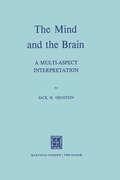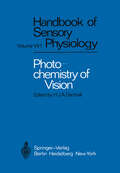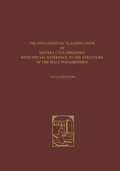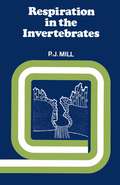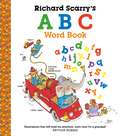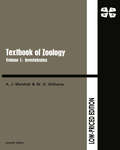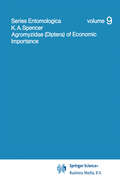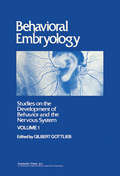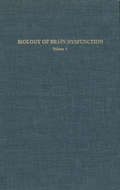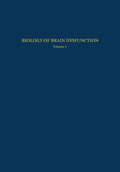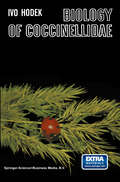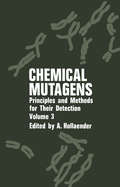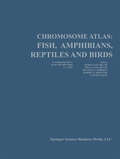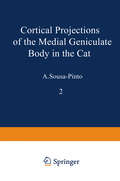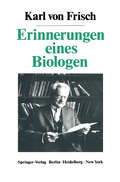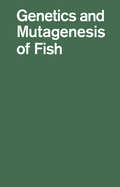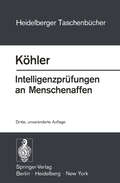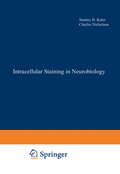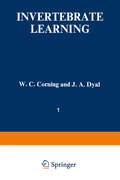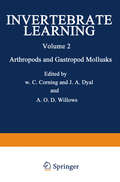- Table View
- List View
The Mind and the Brain: A Multi-Aspect Interpretation
by J.H. Ornstein2 no predictions or experimental findings based on the Identity Theory differ from those based on mind-brain Parallelism or Epiphenomenal ism, i.e., Dualism in general. The Identity Theory, therefore, must stand or fall on its reputed conceptual advantages over Dualism. Then the conceptual issues at stake in the mind-brain problem are discussed. The kernel of truth present in the Identity Theory is shown to be obscured by all the talk about reducing sensations to neural processes. An attempt is made to characterize pain adequately as a pattern or complex of bodily processes. This view is then reconciled with the asymmetry in the way one is aware of one's own pains and the way in which others are. This asymmetry constitutes an epistemological dualism which no philosophical theory or scientific experiment could alter. The sense in which experiences are both mental and physical is thus elucidated. A Multi-Aspect Theory of the mind is presented and defended. Five aspects of pain are discussed in some detail: experiential, neural, bodily, behavioral and verbal. Having a mind characteristically involves having all of these features except the bodily (i.e., a physical irregularity). Thus having a mind characteristically entails having experiences and a healthy, functioning brain. It also involves being able to act and speak reasonably intelligently.
Photochemistry of Vision (Handbook of Sensory Physiology #7 / 1)
by Herbert J. A. DartnallRadiation can only affect matter if absorbed by it. Within the broad range of 300-1000 nm, which we call "the visible", light quanta are energetic enough to produce excited electronic states in the atoms and molecules that absorb them. In these states the molecules may have quite different properties from those in their dormant condition, and reactions that would not otherwise occur become possible. About 80 % of the radiant energy emitted by our sun lies in this fertile band, and so long as the sun's surface temperature is maintained at about 6000° C this state of affairs will continue. This and the transparency of our atmosphere and waters have allowed the generation and evolution of life. Before life began the atmosphere probably also transmitted much of the solar short-wave radiation, but with the rise of vegetation a new product - oxygen - appeared and this, by a photochemical reaction in the upper atmosphere, led to the ozone layer that now protects us from the energetic "short-wave" quanta that once, perhaps, took part in the generation of life-molecules. Light is an ideal sensory stimulus. It travels in straight lines at great speed and, consequently, can be made to form an image from which an animal can make "true", continuous and immediate assessments of present and impending events.
The Phylogenetic Classification of Diptera Cyclorrhapha: With Special Reference to the Structure of the Male Postabdomen (Series Entomologica #8)
by G.C. GriffithsThe Phylogenetic Classification of Diptera Cyclorrhapha (Series Entomologica)
by Graham C. GriffithsRichard Scarry's ABC Word Book
by Richard ScarryJump into Busy Town and learn your ABCs with Richard Scarry and his friends!Each double page spread is packed with words starting or finishing or including a specific letter of the alphabet. The letters are highlighted in bright pink to emphasise the learning point. It's busy and it's bright and it makes learning your alphabet fun.
Agromyzidae (Series Entomologica #9)
by K.A. SpencerThe original stimulus which started KENNETH SPENCER on a study of the Agro myzid flies was an invitation, which he accepted, to translate from the German the monograph on Leaf Miners by Professor E. M. HERING. From this developed nearly 20 years of collaboration until Professor HERING's death in 1967. Dr. SPENCER has himself described over 600 new species in the family, many of which he collected and reared from known host plants during his extensive travels to all the five main continents. Largely as a result of his work, the number of species known in Britain has increased from 90 in 1945 to 313 today. He is thus uniquely qualified to write this book about the hundred and fifty or so species which are regularly associated with cultivated plants. Much of the taxonomic detail provided here will be of value primarily to specialists; but with the help of a microscope and the botanical host list (Chapter 2) and the numerous illustrations (mostly prepared by ANN SPENCER) those in agri cultural institutes and elsewhere should now be able to identify the majority of species found attacking crops in any part of the world.
Behavioral Embryology: Studies on the Development of Behavior and the Nervous System
by Gilbert GottliebBehavioral Embryology deals with the theoretical, philosophical, and empirical problems of behavioral embryology. The book is composed of studies on prenatal neural and behavioral development. The text discussed various topics on behavioral embryology such as the genetic aspects of neuro-embryology; prenatal ""organizing"" effect of gonadal hormones on the brain and later behavior; sensory, motor, or central neural function; overt embryonic or fetal sensitivity; and overt motility and actual behavior. Embryologists, anatomists, cell biologists, physiologists, physicians, and medical researchers will find the book invaluable.
Biology of Brain Dysfunction: Volume 1
by Gerald E. GaullThe growth of neurochemistry, molecular biology, and biochemical genetics has led to a burgeoning of new information relevant to the pathogenesis of brain dysfunction. This explosion of exciting new information is crying out for collation and meaningful synthesis. In its totality, it defies systematic summa tion, and, of course, no one author can cope. Thus invitations for contributions were given to various experts in areas which are under active investigation, of current neurological interest, and pregnant. Although this project is relatively comprehensive, by dint of size, other topics might have been included; the selection was solely my responsibility. I believe systematic summation a virtual impossibility-indeed, hardly worth the effort. The attempt to assemble all of the sections involved in a large treatise with multiple authors inevitably results in untoward delays due to the difference in the rate at which various authors work. Therefore, the following strategy has been adopted: multiple small volumes and a relatively flexible format, with publication in order of receipt and as soon as enough chapters are assembled to make publication practical and economical. In this way, the time lag between the ideas and their emergence in print is the shortest.
Biology of Brain Dysfunction: Volume 2
by Gerald E. GaullThe growth of neurochemistry, molecular biology, and biochemical genetics has led to a burgeoning of new information relevant to the pathogenesis of brain dysfunction. This explosion of exciting new information is crying out for collation and meaningful synthesis. In its totality, it defies systematic summa tion, and, of course, no one author can cope. Thus invitations for contributions were given to various experts in areas which are under active investigation, of current neurological interest, and pregnant. Although this project is relatively comprehensive, by dint of size, other topics might have been included; the selection was solely my responsibility. I believe systematic summation a virtual impossibility-indeed, hardly worth the effort. The attempt to assemble all of the sections involved in a large treatise with mUltiple authors inevitably results in untoward delays due to the difference in the rate at which various authors work. Therefore, the following strategy has been adopted: multiple small volumes and a relatively flexible format, with publication in order of receipt and as soon as enough chapters are assembled to make publication practical and economical. In this way, the time lag between the ideas and their emergence in print is the shortest.
Biology of Coccinellidae
by Ivo HodekThis book provides the first monograph of Coccinellidae. Although the group finds inclusion both in Clausen's (1940) "Entomophagous Insects" and in Balduf's (1935) "Entomophagous Coleoptera", reference in these works is limited to three and twenty pages respectively. Moreover, the last thirty years since these books appeared have ~een a great deal of work on the group. The use of insecticides largely destroyed the early attempts at biological control and interest remained low for as long as insecticides appeared quite successfuL However, the problems of insecticides soon became apparent, and in the last decade there have been tremendous developments in biological control, particularly in eombin
The Cartilaginous Skeleton of the Bronchial Tree (Advances in Anatomy, Embryology and Cell Biology #48/3)
by F. VanpeperstraeteA review of the publications, dealing with the morphology of the cartilages of the tracheo-bronchial tree, shows how scarce they are and how fragmentary the contributions based on research. Isolated parts only of the bronchial tree have been investigated, mostly in single specimens or small series. Anatomical textbooks merely state that the trachea and main bronchi are supported by rings and the more distal branches by irregular, circumferentially placed plates which become smaller towards the periphery, until they disappear in the bronchioli. It is at once obvious that this old-time view is not only superficial, but it leaves one completely ignorant about the site where rings cease and plates begin. No information is available about the arrangement of cartilages around the bifurcations of the main bronchi and contradictory descriptions are given about the cartilaginous architecture of the lobar bronchi. A more searching study reveals that cartilages are hardly mentioned in the huge amount of literature on bronchial anatomy which has accumulated since 1880. It is therefore not exagerated to say that the study of this subject has been grossly neglected.
Chemical Mutagens: Principles and Methods for Their Detection Volume 3
by Alexander HollaenderThe ready acceptance and wide demand for copies of the first two volumes of Chemical Mutagens: Principles and Methods Jar Their Detection have demon strated the need for wider dissemination of information on this timely and urgent subject. Therefore, it was imperative that a third volume be prepared to include more detailed discussions on techniques of some of the methods that were presented from a theoretical point of view in the first two volumes, and to update this rapidly expanding field with current findings and the new developments that have taken place in the past three years. Also included is a special chapter by Dr. Charlotte Auerbach giving the historical background of the discovery of chemical mutagenesis. Methods for recognizing mutagenic compounds in vitro are a necessary preliminary step toward arriving at satisfactory solutions for recognizing significant mutation rates in man, which must be done before our test tube methods of detection can be considered reliable. Two chapters in this volume make important contributions to this problem. Due to the increasing activity in efforts to perfect techniques for detecting chemical mutagens and their effects on man, it is planned to continue this series of volumes as necessary to keep abreast of current findings.
Chromosome Atlas: Volume 2
by Kurt Benirschke Tao C. Hsu M. L. Becak W. Becak F. L. Roberts Shoffner E. P. VolpeSince the publication of the first Atlas of Mammalian Chromosomes in 1967 the continuous compilation of mammalian karyotypes has become a useful instrument in cytologic and taxonomic studies. Technical advances in preparing mitotic cells from nonmammalian vertebrates have since allowed a better comparison of taxa in fishes, amphibia, reptiles, and birds. In these fields the literature is also widely scat tered; and it has become difficult to survey such information, published as well as unpublished, by nonspecialists. These were among the reasons for the new endeavor of compiling a chromosome atlas for nonmammalian vertebrates. An annual publication is planned with presentation of between 10 and 15 karyotypes from each class. In this second volume, 52 species are presented. For convenience in future colation, the numbering system employs class abbreviations, viz. , P-Pisces, Am-Amphibia, R-Reptilia, and Av-Aves. Within each class, the numbers are necessarily consecutive. In general the karyotypes are laid out following the format employed in An Atlas of Mammalian Chromosomes. Whenever possible both sexes are represented, even though sexual chromosomal dimorphism is not (currently) evident. When the sex chromosomes are known, they are so indicated by conventional nomenclature (XX/XY or ZW /ZZ). In the karyotypes of birds the so-called microchromosomes are grouped together at the end without an attempt at complete enumeration, which is presently impossible. They are usually considered as acrocentrics, but a few are distinctly biarmed.
Cortical Projections of the Medial Geniculate Body in the Cat (Advances in Anatomy, Embryology and Cell Biology #48/2)
by A. Sousa-PintoGenetics and Mutagenesis of Fish: Dedicated to Curt Kosswig on his 70th Birthday
by Johannes Horst SchröderIntelligenzprüfungen an Menschenaffen: Mit einem Anhang zur Psychologie des Schimpansen (Heidelberger Taschenbücher #134)
by W. KöhlerIntracellular Staining in Neurobiology
by Stanley B. Kater Charles NicholsonThe purpose of this book is to provide basic reference material to facilitate the further development and application of the intracellular staining techniques which originated with the introduction of Procion dye as a neurocellular stain. We had sev eral specific objectives in compiling these chapters. First, we recognized that both the techniques and results of intracellular staining have been derived from a variety of preparations and published in diverse journals. Consequently, we tried to make this information more readily available by incorporating several reviews by original authors. This should provide the reader with a knowledge of the kinds of neurobiological prob lems for which intracellular staining has already been employed. A second objective was to facilitate extension of these methods to a wider variety of problems. To this end there are chapters dealing with Procion dye as a marker for ultrastructural investi gations, the use of cobalt as a staining compound and the implementation of computer techniques for quantitative studies of neuronal relationships. As background for further extension of these methods this volume contains material on the history of the discovery of Procion dyes as intracellular stains, the chemistry of these dyes, and fundamentals of fluorescence microscopy. Our final specific objective was to present details of technical procedures that were not readily available in the literature.
Invertebrate Learning: Volume 1 Protozoans Through Annelids
by William CorningSince the publication of the second volume of Comparative Psychology by Warden, Warner, and Jenkins (1940), there has not been a comprehensive review of invertebrate learning capacities. Some high-quality reviews have appeared in various journals, texts, and symposia, but they have been, of necessity, incomplete and selective either in terms of the phyla covered or the phenomena which were reviewed. Although this lack has served as a stimulus for the present series, the primary justification is to be found in the resurgence of theoretical and empirical interests in learning capacities and mechanisms in simpler systems of widely different phylogenetic origin. Intensive research on the physiological basis of learning and memory clearly entails exploration of the correlations between levels of nervous system organization and be havioral plasticity. Furthermore, the presence of structural-functional differ entiation in ganglionated systems, the existence of giant, easily identifiable cells, and the reduced complexity of structure and behavior repertoires are among the advantages of the "simple systems" strategy which have caused many neuroscientists to abandon their cats, rats, and monkeys in favor of mollusks, leeches, planaria, crayfish, protozoa, and other invertebrate preparations. Behavioral research continues to reveal remarkable capacities in these simple organisms and encourages us to believe that the confluence of the invertebrate learning data with the more voluminous vertebrate litera ture will contribute substantially to the enrichment of all of the neurobe havioral sciences.
Let Sleeping Vets Lie
by James HerriotWith two years experience behind him, James Herriot still feels privileged working on the beautiful Yorkshire moors as assistant vet at the Darrowby practice. Time to meet yet more unwilling patients and a rich cast of supporting owners. Full of hilarious tales of his unpredictable boss Siegfried Farnon, his charming student brother Tristan, the joys of spring lambing, a vicious cat called Boris and James' jinxed courtship of the lovely Helen, Let Sleeping Vets Lie, the third volume of memoirs, is sure to delight hardened fans and new readers of James Herriot titles alike.
Metal Ions in Biological Systems: Studies of Some Biomedical and Environmental Problems (Advances in Experimental Medicine and Biology #40)
by Sanat DharThe articles published in this volume are based on the papers del ivered at a conference on the Role of Metal Ions in Biological Systems held November 20 and 21, 1972, at Argonne National Laboratory. The purpose of the conference was to present to an interdiscipl inary audience of physical scientists some recent developments illustrating the chemical and environ mental participation of the heavy metal ions in the biological system. The invited speakers at the conference are special ists in the fields they describe, and the articles presented here are at a level of interest to readers with backgrounds in physical sciences who are not necessari Iy doing research in the areas described. The articles are referenced through 1972, and in some cases early 1973, and thus should also be of value to research workers. It is hoped that the book wi II be of particular interest to chemists, biologists, workers in the fields of en vironmental science and publ ic health, as wei I as graduate and senior undergraduate students in these discipl ines. The conference was sponsored by the Central States Universities, Inc. , a consortium of sixteen midwestern univer sities, the Center for Educational Affairs, Argonne National Laboratory, and the United States Atomic Energy Commission. It is my pleasure to thank the members of the conference committee for their ideas and active help in organizing the conference.

